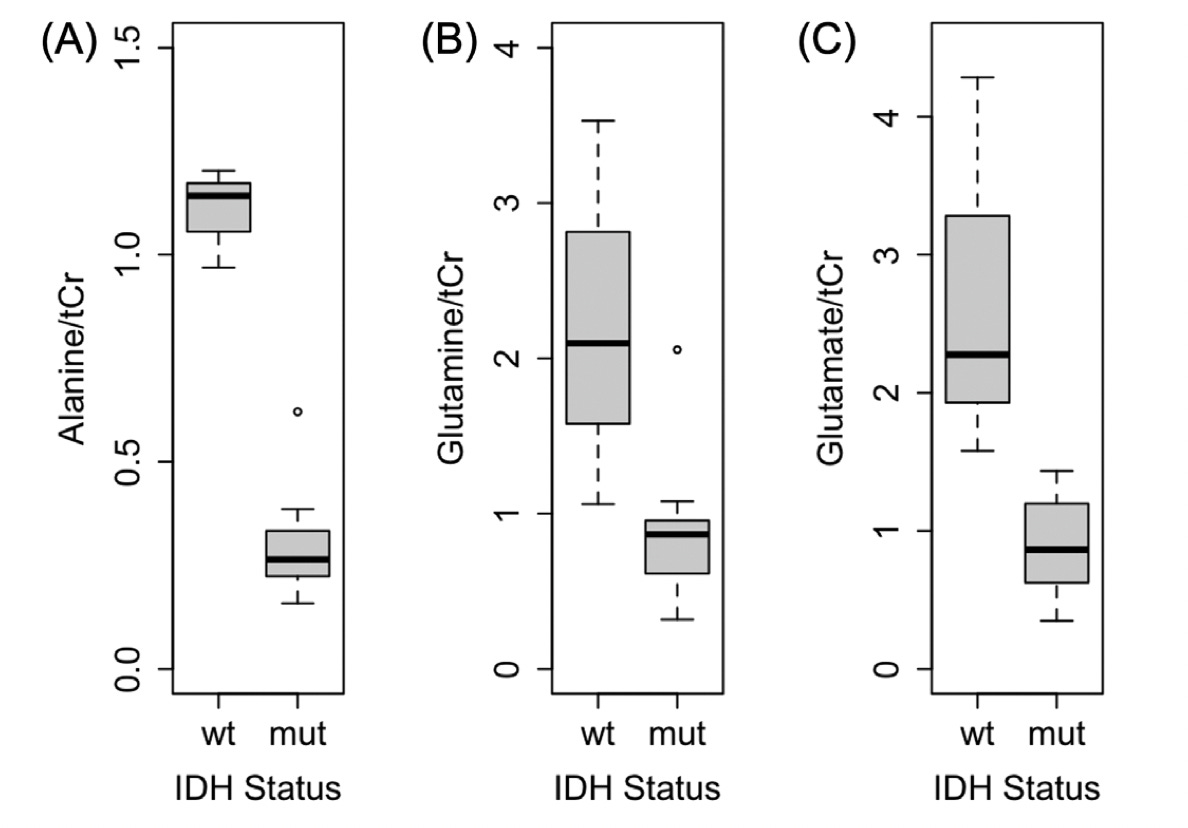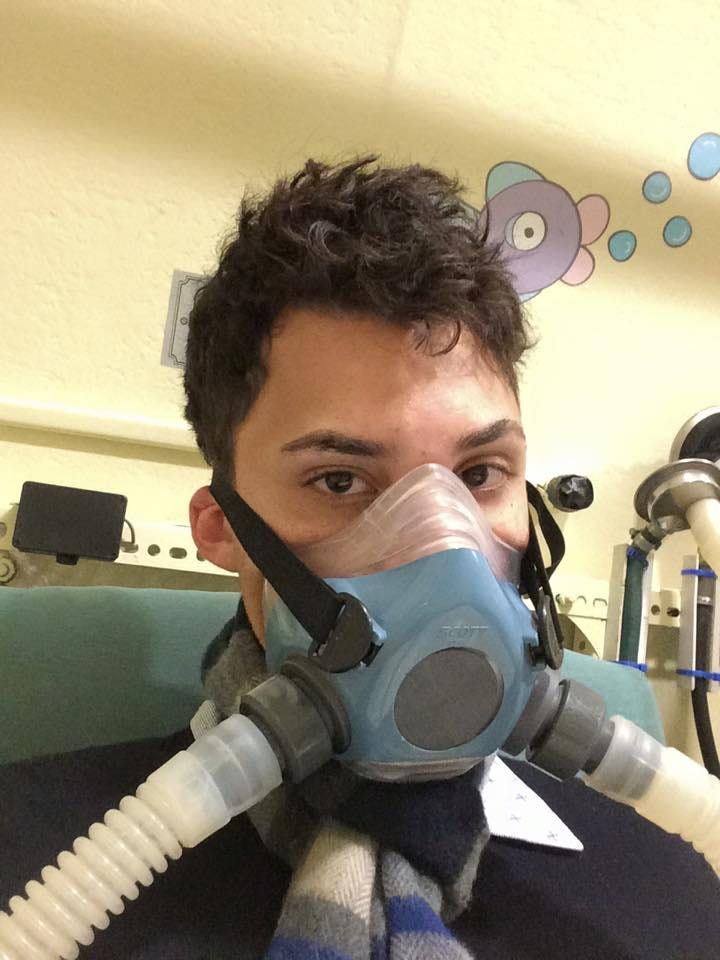Research Roundup w/c 13 March 2023
A summary of research that sparked my interest over the past week.
18/03/23
Association between altered metabolism and genetic mutations in human glioma
Metabolites function as small molecules that are involved in chemical reactions within the human body. In the context of brain cancer, glioma tissue has been shown to exhibit altered metabolism, making it an appealing target to exploit.
This paper investigates the differences in metabolites in human glioma tissue as a function of both IDH mutation and 1p/19q codeletion. The study found that alanine and glutamate concentrations were both significantly lower in IDH-mutated glioma tissue compared to IDH-wildtype, while glutamate concentrations were significantly lower in glioma tissue with 1p/19q codeletion compared to intact samples. The authors suggest that these findings could be useful for treatment stratification and personalised medicine in the context of emerging glioma treatments that target metabolic dysregulation. The study also highlights the need for a better understanding of altered metabolism in molecular subtypes of gliomas.

13/03/23
Fibromyalgia is a chronic pain syndrome that is difficult to treat with conventional medications. Brain injury may be one of the triggers of fibromyalgia and the condition often goes undiagnosed, with the syndrome being difficult to characterise. Hyperbaric Oxygen Therapy (HBOT) offers a non invasive, neuro-modulatory treatment that involves breathing 100% oxygen under elevated atmospheric pressure.
The study found that HBOT significantly reduced fibromyalgia associated pain compared to pharmacological treatment (p=0.001). HBOT also improved more general fibromyalgia associated symptoms, quality of life, pain threshold, and conditioned pain modulation. Single-photon emission computed tomography (SPECT) imaging showed increased brain activity in frontal and parietal regions associated with executive function and emotional processing.
These results prove that HBOT is an effective treatment for fibromyalgia triggered by TBI. Furthermore, the beneficial clinical effect is correlated with increased brain activity in executive and emotional processing regions.

The mTOR pathway plays a crucial role in regulating cell growth, proliferation, and survival. Dysregulation of the mTOR pathway has been associated with several neurodevelopmental disorders associated with epilepsy.
In this review, the authors discuss the potential use of mTOR inhibitors such as rapamycin and everolimus as anti-seizure medication. It provides an overview of pharmacological treatments targeting the mTOR pathway for epilepsy based on lectures from the ILAE French Chapter meeting in October 2022 in Grenoble. One non pharmacological method of at least stabilising mTOR could be to simply reduce meal frequency and practice time restricted feeding.
Valproate and lithium: Old drugs for new pharmacological approaches in brain tumours?
The article discusses the potential use of valproate (aka sodium valproate, valproic acid, Epilim) as an anticancer drug, based on preclinical studies that suggest it can inhibit cancer cell proliferation by modulating signalling pathways. Clinical trials have shown mixed results on whether co-administration of valproate with chemotherapy improves overall survival in brain cancer patients. Lithium has also been tested as an anticancer drug in preclinical studies and a small number of clinical trials, but its potential as a complementary therapeutic approach is less convincing than valproate. The article suggests that specific phase III studies are needed to validate the repositioning of these drugs in oncological research. I put myself on this drug early on in my cancer ‘journey’, after reading that it could be used as a repurposed drug that has an additional benefit of complimenting a ketogenic approach to managing epilepsy. The side effects were unpleasant, but I may have had some anti cancer benefits from the drug. We can only speculate, but it is interesting.
The article discusses the potential use of metabolism-related drugs, specifically metformin and statins, as anti-tumour agents for glioblastoma (GBM). The study evaluates the effects of these drugs on various parameters in GBM patients and cells, both in vitro and in vivo. The results suggest that these drugs could have beneficial effects on clinical, functional, molecular, and signalling parameters in GBM, including reducing cell proliferation and invasion, inducing apoptosis, and modulating various signalling pathways. The authors conclude that further research is needed to fully understand the potential benefits of metformin and statins in treating glioblastoma.
Clinical, pharmacological and formulation evaluation of disulfiram in the treatment of glioblastoma - a systematic literature review
The article discusses the potential use of disulfiram, an anti-alcoholism drug, as an anticancer agent for glioblastoma (GB). Through a systematic literature review, the article evaluates the clinical, pharmacological, and formulation strategies for drug delivery and translation into clinical practice. The article highlights the limitations of the oral form of disulfiram and proposes the use of molecular encapsulation and parenteral dosage forms to improve its bioavailability and efficacy. The development of optimized drug delivery systems shows promise for the clinical translation of disulfiram into GB adjuvant therapy.
Evaluation of the Antioxidant Activity of Levetiracetam in a Temporal Lobe Epilepsy Model
This study aimed to evaluate the effects of Levetiracetam (LEV), a commonly used anti-seizure drug, on the oxidant-antioxidant status in the hippocampus of rats with temporal lobe epilepsy (TLE). In vitro experiments showed that LEV had scavenging activity against hydroxyl radical (HO•). In rats with TLE, LEV administration increased superoxide dismutase (SOD) and catalase (CAT) activity, decreased glutathione reductase (GR) activity, and reduced hydrogen peroxide (H2O2) levels. The study concludes that LEV has significant antioxidant effects in restoring the redox balance in the hippocampus of rats with TLE. This was a rodent study, but still interesting nonetheless. Previous studies have suggested that LEV could help sensitive brain tumours to certain chemotherapeutic agents and more broadly, researchers are asking questions about the effects different anti-seizure drugs may have on progression free and overall survival.
16/03/23
It appears likely that we may be seeing another cancer cluster in the news. On February 3, 2023, a train derailed in East Palestine, Ohio, releasing 1.1 million pounds of toxic flammable gas, vinyl chloride. Exposure to vinyl chloride is associated with rare forms of liver cancer, brain cancer, and lung cancer. Toxic chemical disasters can also cause psychological trauma in nearby residents, including acute onset of psychiatric disorders, exacerbation of existing psychological conditions, PTSD, and suicide. The article advises that health assessments should be conducted to evaluate any health effects experienced by the community, including cancer, COPD, cardiovascular diseases, and mental health. The authors note that third-party scientific opinions are needed to inform the public and prevent distrust and secondary disasters.
Sleep and epilepsy have a two-way relationship. Lack of sleep or disruption to the sleep-wake cycle can trigger seizures, while seizures can disrupt sleep. A clinical trial found that teaching parents about good sleep hygiene for their children with epilepsy can help reduce seizures, but this method is expensive and not easily scaled up. The CASTLE Sleep-E trial is studying a new approach that uses a tailored online program for parents to help their children with epilepsy sleep better, with the goal of improving seizure control and quality of life.





You are doing God’s work Andrew and I’m grateful you are doing well!
Is Stephanie still holding on??? Have you been in contact with doctors or others regarding this procedure??? It’s been almost ten years since the trials were approved and research has been ongoing. Just really curious now about the outcomes.
Hi Andrew :)
My thoughts and prayers are with you as you continue on your journey!!!
I came across this 60 Minutes video from 2015 where they are discussing using the poliovirus to shrink brain (and other) tumors. By now, I’m sure you are probably steeped in all available information and treatment options but I would have remorse if I didn’t bring the information to your attention.
Here’s the 60 Minutes video:
https://youtu.be/FEA6BQARqE8
And here is an article on the approval that Duke Health received titled:
Duke’s Poliovirus Therapy Wins FDA “Breakthrough” Status to Expedite Research
https://medschool.duke.edu/news/dukes-poliovirus-therapy-wins-fda-breakthrough-status-expedite-research
Your information on hyperbaric oxygen chambers was something we never knew could be promising for traumatic head injuries!!! My brother suffered a THI over thirty years ago and has since, because of all the medication he has been prescribed that have created a whole new set of worrisome symptoms, this option sounds incredibly interesting!!! Thank you for sharing the information you do :)
Keep fighting the good fight, my friend! You are not alone!